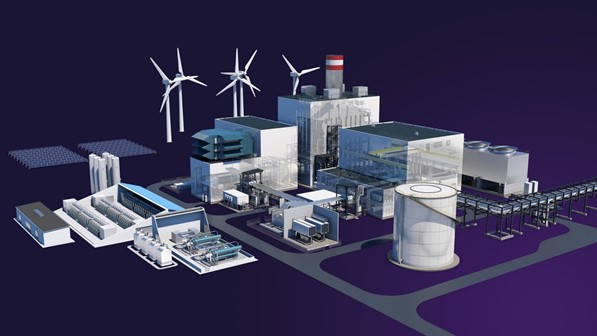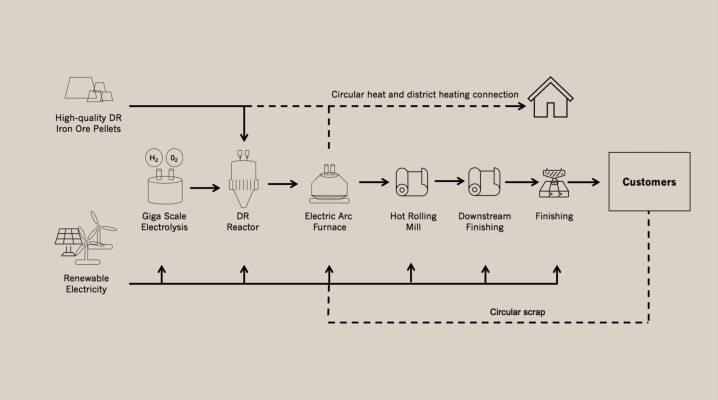Green hydrogen
The Green Solutions - Viet Nam
|
Basic description The Green Solutions (TGS) is an energy company founded in 2016 and based in Ho Chi Minh City, Viet Nam. It is undertaking several local projects, including a liquefied natural gas (LNG) terminal, biomass pellet plants, wind and solar power plants, and green hydrogen production plants. TGS is currently developing two green hydrogen projects in southern Viet Nam, each with 240 megawatts (MW) of electrolyser capacity. The first project in Tra Vinh Province, which begins construction in October 2022, will eventually produce 48,000 cubic meters (m3) of hydrogen per hour with surplus renewable electricity from the grid. The corresponding green hydrogen output of 30-36 kilotonnes (kt) will be utilised in the production of 180-216 kt ammonia each year. The second project located in Ben Tre province will be kicked off end 2022. This project will include 800 MW offshore wind and 50 MW onshore wind power capacity in Ba Tri, near Ben Tre, which will primarily supply renewable electricity for green hydrogen and green ammonia production. Both projects reached final investment decisions in 2021 and are expected to be commissioned by end 2024, with first commercial production planned for the beginning of 2025. They are both strategically located next to deep-sea areas to facilitate exports. |
 |
 |
Before 2030, TGS aims to develop six other projects with the same 240 MW electrolyser capacity. Total output from these projects would equal 500 kt green hydrogen and 3 million tonnes (Mt) ammonia per year. These projects will also produce green hydrogen using surplus renewable electricity from southern Vietnam that cannot be transmitted to the rest of the country due to the lack of transmission capacity.
Project rationale TGS projects are aligned with Viet Nam’s COP26 commitment to reach net-zero emissions by 2050. The choice of location is based on availability of renewable energy sources, either from generators with surplus production or from on-site capacity developed by TGS. Both renewable capacity addition and green hydrogen manufacturing plants will contribute to social and economic development of the region by creating jobs. The decision to vertically integrate projects to produce ammonia is driven by the maturity of this market for exports, for instance to European consumers. While ammonia is expected to be used in fertiliser applications in the short term, TGS expects that future demand will also come from new markets such as electricity generation, shipping fuel, and green hydrogen transport. |
Governance
Each project will be carried out by a unique special purpose vehicle (SPV), with TGS being the parent company and majority shareholder of each. The SPVs will focus on project development, construction, and operations, while the financing and commercial discussions with off-takers are done at the TGS group level.
TGS will rely on industrial partnerships in other parts of the value chain. For instance, as the port infrastructure is not yet well developed in southern Vietnam, TGS is collaborating with ECONNECT Energy to develop floating platforms to directly load green ammonia ships.
Business model
Although green ammonia would currently fetch a lower price than fossil fuel-based ammonia due to the ongoing energy crisis, fossil fuel markets are volatile and spot prices could soon return to pre-crisis levels. Thus, it is key to secure medium- to long-term off-take contracts (3-10 years) for green hydrogen and green ammonia, possibly with fixed prices, and/or to identify applications in markets where demand is less sensitive to fossil fuel price variations.
TGS aims to secure export sales for most of its production and has already received Expressions of Interest from potential green ammonia off-takers in Japan, South Korea, Singapore, and Europe. In parallel, the company is also exploring local market development.
The business model for green hydrogen in Viet Nam currently focuses on transport applications, especially for fuel cell trucks and hydrogen buses, replicating a model already existing or being developed in other countries. This will require expanding TGS activities in the mobility sector or identifying a key partner to manage the whole value chain, including refuelling stations.
Enabling market conditions and investment de-risking
Viet Nam’s electricity grid does not have the capacity to absorb and transmit all generation from renewable energy sources, thus leading to curtailment. Green hydrogen can be used to store surplus electricity and minimise the financial risk of curtailment for renewable electricity generators. Governments of emerging and developing economies facing similar grid bottlenecks could support the development of green hydrogen in their countries with policies facilitating access to renewable power for green hydrogen producers, which could set up plants in locations where there is a surplus of electricity generation capacity. In particular, a direct power purchase agreement mechanism between renewable electricity generators and green hydrogen manufacturers could accelerate green hydrogen projects. Viet Nam’s National Power Development Plan 8 (PDP8) mentions, for the first time, green hydrogen and green ammonia as solutions to replace and move away from fossil fuels.
Financing
For its first projects, TGS is working on project finance solutions with a flexible mix of equity and debt. TGS remains the majority shareholder and aims to raise debt from development banks or development finance institutions at concessional rates. For future projects, it will be exploring flexible co-investment opportunities for renewable electricity production, green hydrogen, and green ammonia plants.
As the green hydrogen and green ammonia markets become more mature, TGS plans to issue green bonds to finance future projects and/or raise capital by undertaking an initial public offering (IPO) in a well-established stock market.
Related Documents